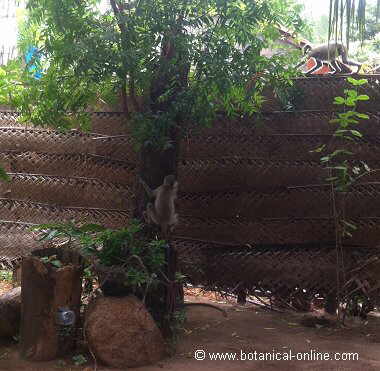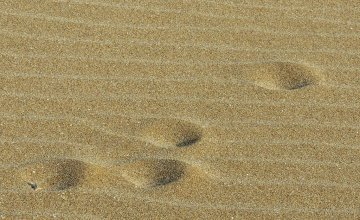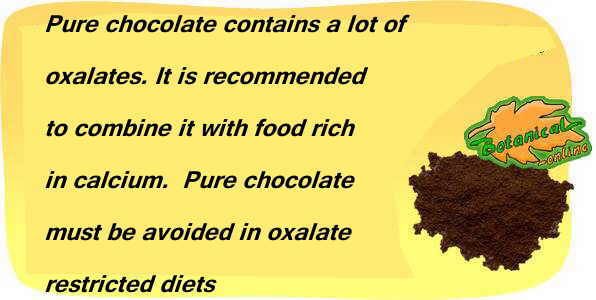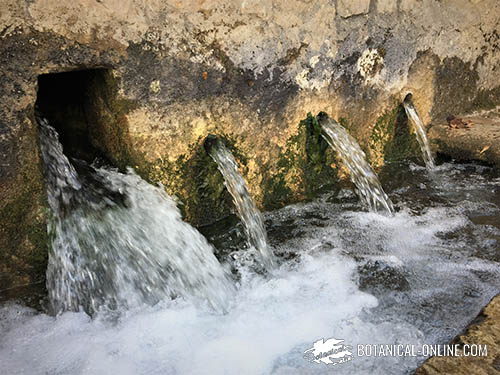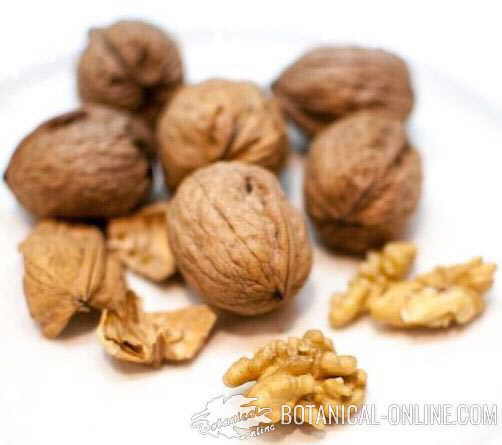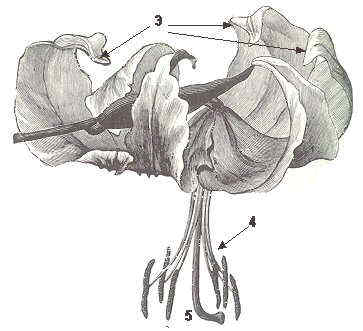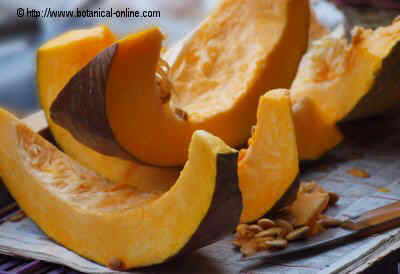Contents
MEDICINAL PROPERTIES OF CHESTNUT TREE
Healing properties of chestnut tree: a plant rich in tannins
The chestnut tree is a plant that contains many tannins. Tannins are components which, when used improperly are toxic, however, used in the adequate proportion, provide medicinal properties. They are considered as astringent, bacteriostatic, expectorant, sedative and antitussive.
This can be exploited in the natural treatment of ailments such as:
Internal use herbal preparations with chestnut tree
 Diarrhea: Tannins have the ability to stop very persistent diarrhea. (Decoction for 20 minutes of three tablespoons of crushed bark per liter of water. Take two or three cups a day.)
Diarrhea: Tannins have the ability to stop very persistent diarrhea. (Decoction for 20 minutes of three tablespoons of crushed bark per liter of water. Take two or three cups a day.)- Dysentery: The same preparation is used to treat dysentery, a digestive condition caused by microorganisms that generally manifests as abdominal pain, fever, bloody diarrhea, etc. Bacteriostatic and astringent properties of chestnut are very suitable to decrease the development of pathogenic microorganisms and relieve the symptoms that these infections produce. (Decoction for 20 minutes of three tablespoons of crushed bark per liter of water. Take two or three cups a day.)
- Respiratory diseases: The chestnut tree is rich in a component called hamamelose that gives healing properties to the respiratory system for its soothing, antitussive and expectorant values. All this, makes it useful in treating respiratory conditions such as:
- Bronchitis: It reduces inflammation of the bronchi and helps you expel the excess of secretions. (Infusion of 4 or 5 tablespoons of dried leaves per liter of water. Take three glasses a day)
- Cough: Its antitussive properties calm coughing (infusion of 4 or 5 tablespoons of dried leaves per liter of water. Take three glasses a day, by means of several spoonfuls from time to time, away from meals)
- Asthma: The relieving and antitussive properties of chestnut tree are ideal for the treatment of asthma by helping to relieve cough and relax the lungs. (Infusion of 4 or 5 tablespoons of dried leaves per liter of water. Take three glasses a day, by means of several spoonfuls from time to time, away from meals)
External use herbal preparations with chestnut tree
The astringent and bacteriostatic properties of this plant are suitable for external treatment of respiratory diseases or for the care of the skin or scalp. It can be used for the following anomalies:
- Pharyngitis: Chestnut tree gargles help reduce inflammation and relieve pain (gargling performed with the infusion of one teaspoon of dried leaves per cup of water)
- Wounds: The same preparation, applied on the wounds, protects against infection and helps healing.
- Mouth sores: In the treatment of mouth ulcers, specially canker sores, its bacteriostatic and astringent properties help to cure them (Make mouthwashes with the infusion of 4 or 5 tablespoons of dried leaves per liter of water.
- Problems with sore teeth and poor adaptation to dentures: The above treatment is suitable to help settle the false teeth and cure minor inflammations or sores that false teeth or dentures can produce in it.
- Food odor: (Make a decoction with a handful of dry brown bark per liter of water for 15 minutes. Wash the feet with the liquid to reduce excessive sweating especially in summer, for athletes, runners, cyclists or all those people who tend to have much feet perspiration)
- Natural shampoo for blonde hair: With the decoction of 6 tablespoons of crushed leaves per liter of water for a quarter of an hour, you can make a shampoo for blonde hair. It provides shine and strength; and your can obtain very bright copper reflexes.
Contraindications and toxicity of chestnut tree
Its high tannin content can cause stomach irritation in people with sensitive stomachs.
There is evidence it can increase stomach acid so it is not suitable using internal preparation in people suffering from heartburn, flatulence, stomach ulcers of similar conditions.
![]() More information on chestnut tree
More information on chestnut tree

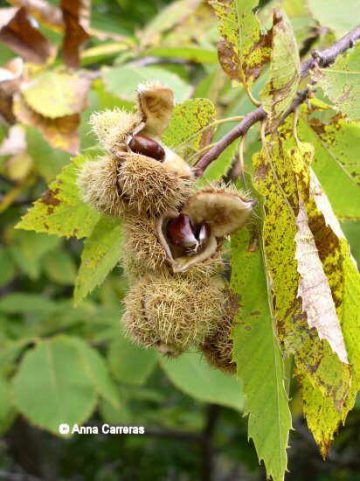 Diarrhea: Tannins have the ability to stop very persistent diarrhea. (Decoction for 20 minutes of three tablespoons of crushed bark per liter of water. Take two or three cups a day.)
Diarrhea: Tannins have the ability to stop very persistent diarrhea. (Decoction for 20 minutes of three tablespoons of crushed bark per liter of water. Take two or three cups a day.)